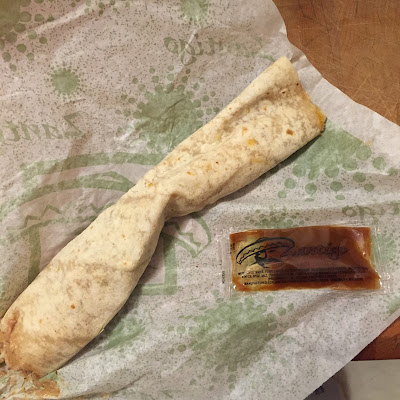Almost Agnes's Flatbread
Sometimes when I am testing a recipe I can't help myself. I change things a bit. It is a compulsion.
I don't know Agnes. I got her recipe for Swedish flatbread from a woman I interviewed a few years ago. Now, I wish I knew Agnes so I could ask her some questions about this recipe. I halved the wet ingredients but used nearly as much flour as the original recipe calls for. I am all about a nice wet, pliable dough but using the original proportions this dough would have been too wet to work with. Also, Agnes's loves would likely have an 18 inch diameter while mine were about 8 inches across. Agnes used Karo syrup and I substituted molasses.
Many old recipes call for scalded milk. Now that we use pasteurized dairy products, this is no longer a necessity. But bringing the milk to a warm temperature aids in rising the yeast. I guess some cooking techniques are meant to be kept.
Whatever the changes this bread is mild and slightly sweet, and a perfect alternative for your weekend sandwich or dinner party bread basket.
Agnes's Flatbread
Makes 8 small rounds
1/2 cup whole milk
1/2 stick butter
1 beaten egg
1 package of yeast
1/2 cup warm water
1/4 cup molasses
1 cup whole wheat flour
3 to 4 cups unbleached flour
Scald milk; add stick of butter and allow to melt. When milk-butter is cool enough, add beaten egg.
Dissolve yeast in warm water and whisk in molasses; allow to foam.
Combine all liquids and mix well. Add wheat flour and one cup of unbleached flour. Mix well; continue mixing and adding 1 cup of unbleached flour at a time, mixing well after each addition.
Place dough in an oiled bowl and cover with a towel; let rise to double.
Gently fold dough down; let rest 10 minutes. Divide into 6 to 8 balls. Roll each ball into 1/4 inch thickness. Place two rounds on baking sheet. Let rise to 1/2 inch thickness.
Dip tines of fork into flour and make holes on each sphere about 1/2 inch apart. Tip: Put some of the breads to rise in a place where they won't rise as quickly. Bake at 400 degrees for 10 minutes. Transfer to wire rack and immediately wipe tops with a wet cloth. Cover with a dry towel until the bread is cool. Freezes well.



Comments